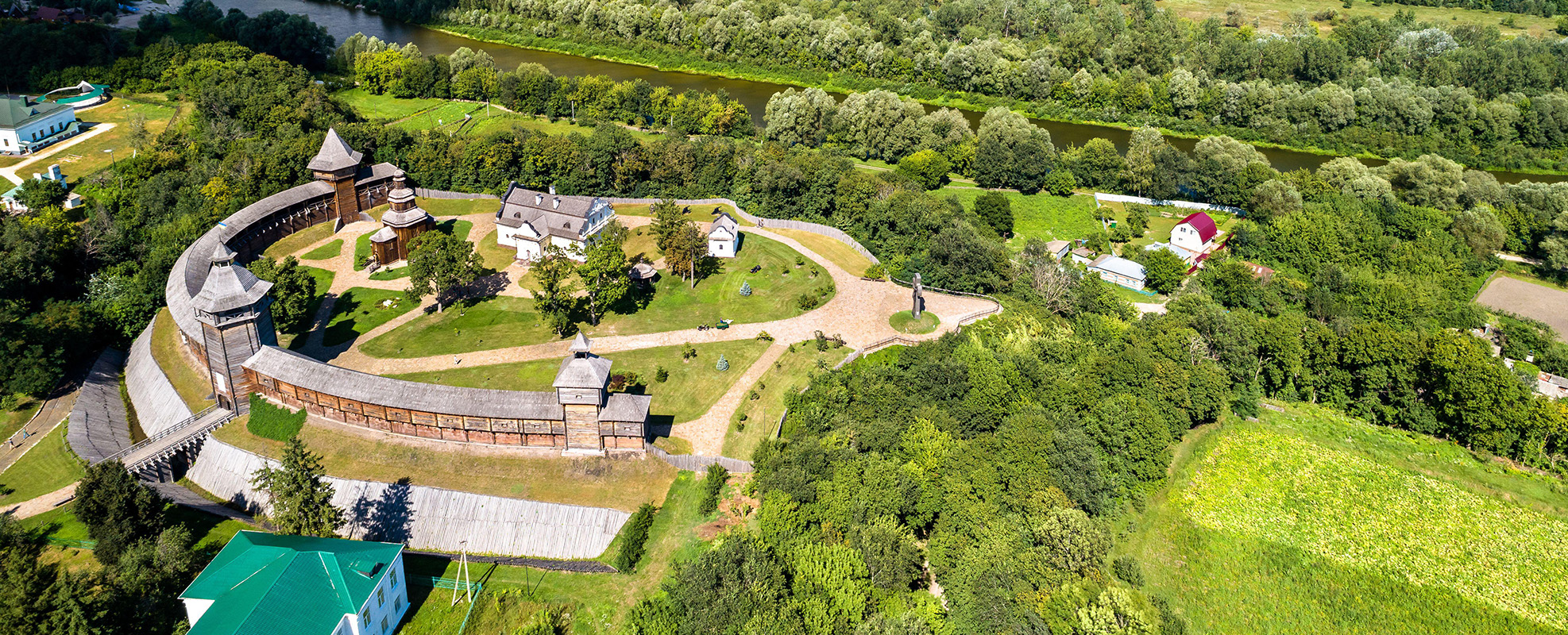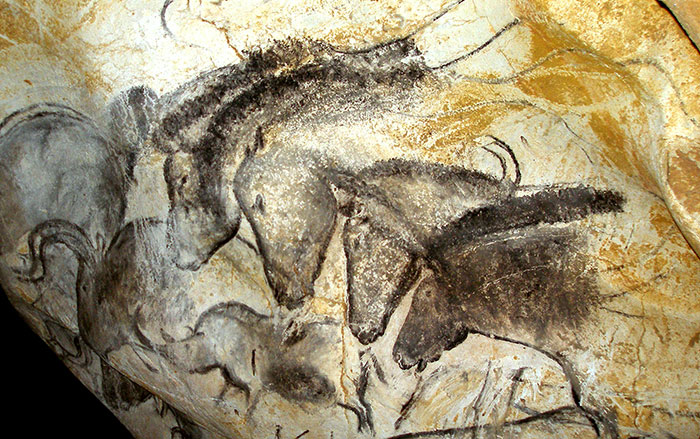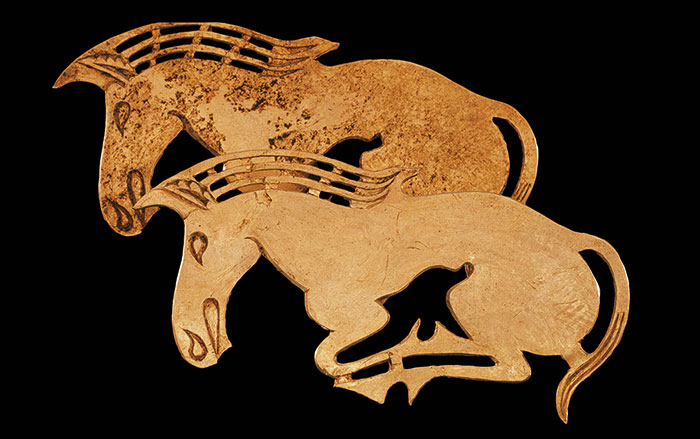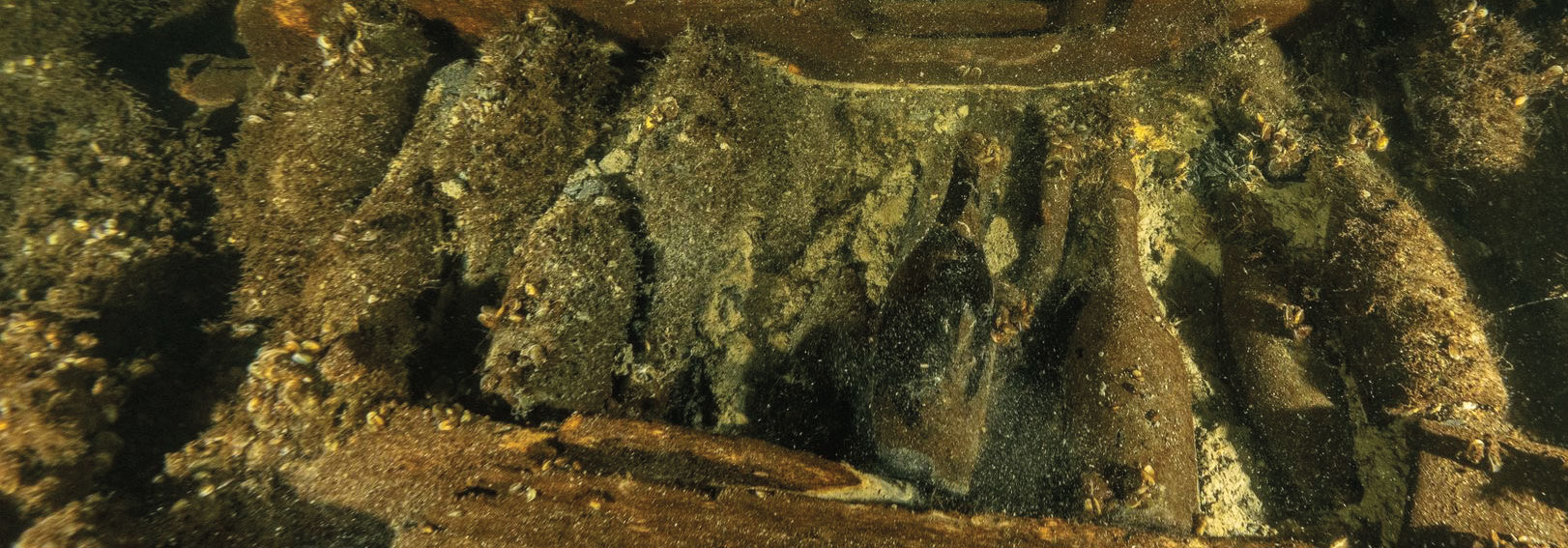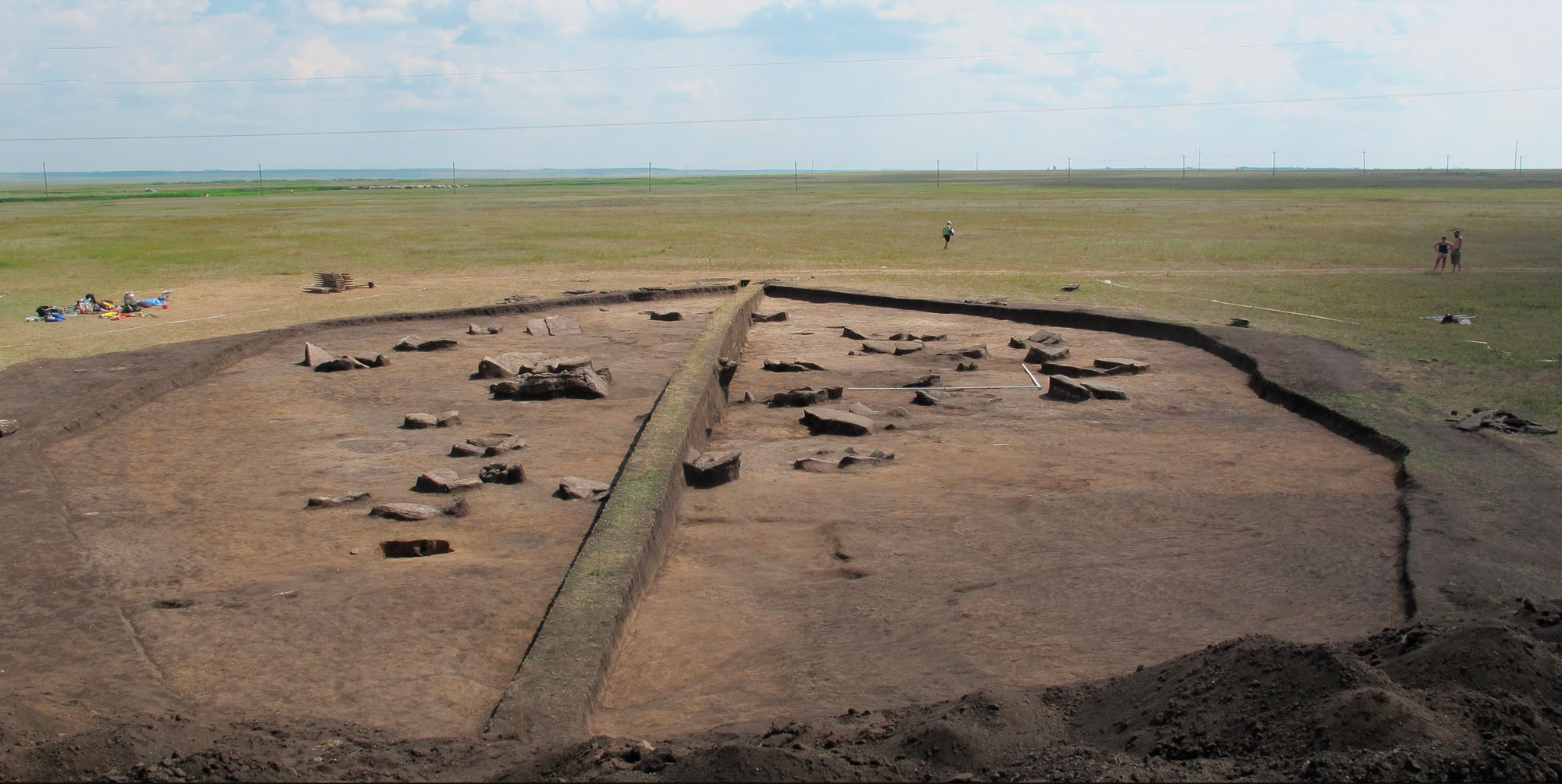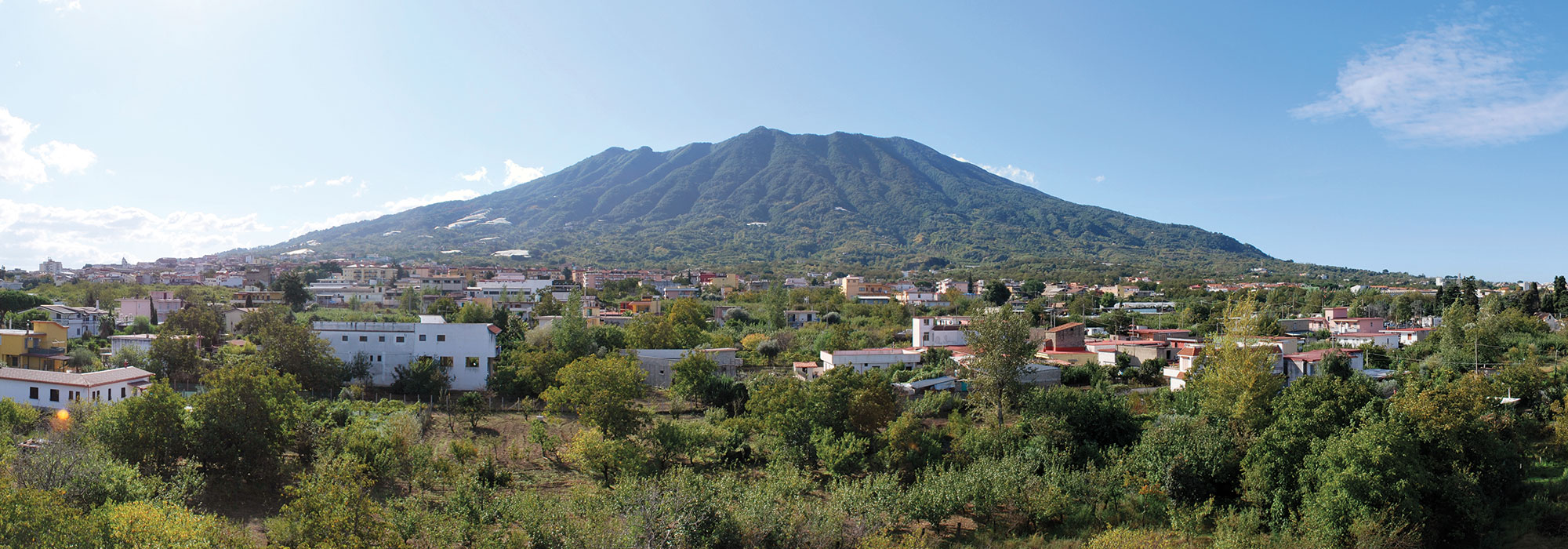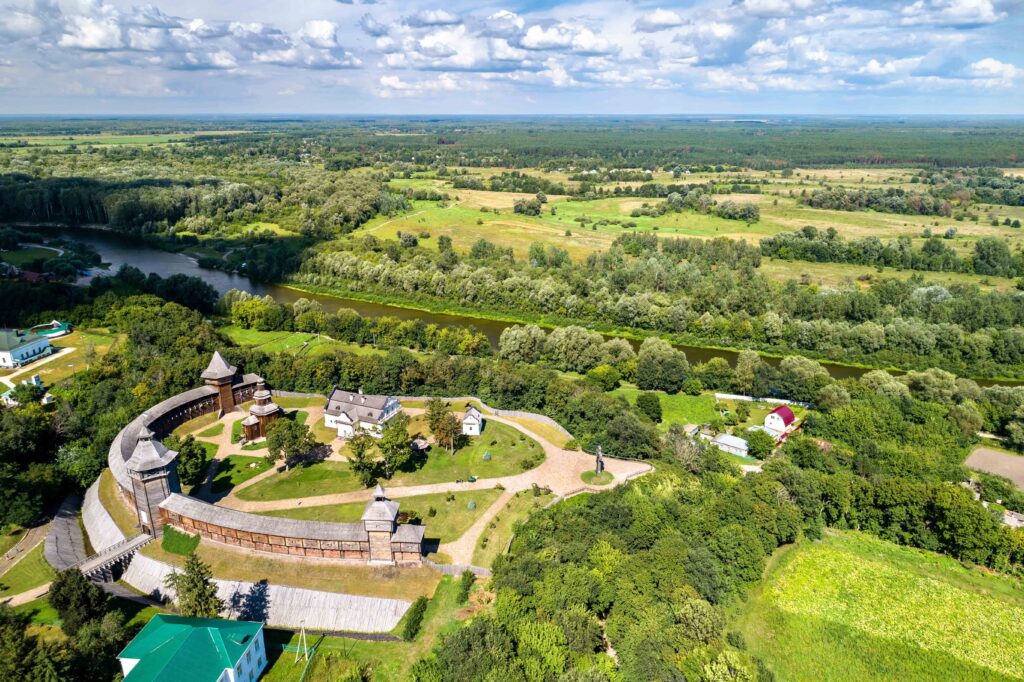
On November 2, 1708, thousands of Russian troops acting on the orders of Czar Peter I, known as Peter the Great, stormed Baturyn, the Cossack capital in north-central Ukraine. The Cossack leader, or hetman, Ivan Mazepa—who had been a loyal vassal of the czar until not long before—had departed with much of his army several days earlier to join forces with the Swedish king Charles XII, Peter’s opponent in the Great Northern War (1700–1721). The fortified core of Baturyn consisted of a citadel on a high promontory overlooking the Seim River and a larger adjoining fortress densely packed with buildings, above which soared the brick Cathedral of the Holy Trinity. The citadel and fortress were each surrounded by defensive walls, earthen ramparts, and moats whose sides were lined with logs. Although they sustained heavy losses, the Russian forces managed to seize Baturyn, which proved to be a key victory.
Some 1,000 troops defending Baturyn scaled the fortification walls, crossed the moat, and stole away to rejoin Mazepa and the Swedes. The remaining 6,000 or so Cossacks and foreign mercenaries inside the fortress and citadel, along with a roughly equal number of civilians who had taken refuge there, were at the invaders’ mercy. Bent on punishing the populace for Mazepa’s betrayal, the attackers gave no quarter, slaughtering more than 11,000 in all, looting weapons, valuables, and provisions, and burning what remained. They also ventured just over a mile south to the suburb of Honcharivka, where Mazepa had built his private residence, a fortified villa featuring a three-story palace. They pillaged and torched this property as well. In a single day, the capital that Mazepa had spent two decades building into a cultural, artistic, and industrial center—and a symbol of Cossack independence—had been reduced to ash and ruin.
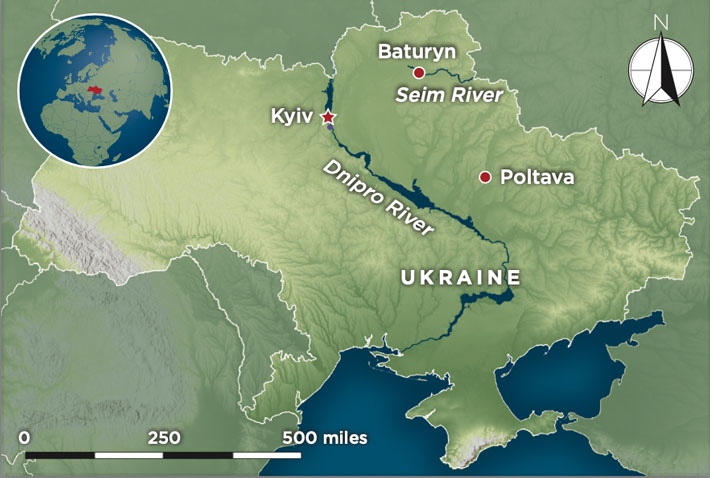
Starting in 2001, the Canada-Ukraine Archaeological Project, which includes members from the Canadian Institute of Ukrainian Studies (CIUS) at the University of Alberta and Chernihiv College National University, excavated at multiple sites in Baturyn and its suburbs in an attempt to learn what life was like in the Cossack capital and to understand what happened when it was destroyed in 1708. These excavations, which have been led since 2012 by Yurii Sytyi of Chernihiv College National University, have been on hold since 2022 due to Russia’s invasion of Ukraine. Based on some of the project’s early discoveries, in 2008 the Ukrainian government reconstructed the citadel and its fortifications. “In Ukraine, there’s not a single place that looks the way it did during the Cossacks’ time,” says Tatiana Tairova-Yakovleva, a historian of Ukraine and former director of the Center for Ukrainian Studies at St. Petersburg State University. “The archaeologists have done absolutely fascinating work. They were able to find the fortress and the residence of the hetman in Honcharivka, and this made the reconstruction possible. Now you can see how at least some of the buildings looked in Mazepa’s time. Now we can start to understand these people’s mentality and how they lived.”
EXPAND
Mazepa's Afterlife
After his death in 1709, the Cossack hetman Ivan Mazepa was portrayed as an avatar of liberty by writers such as Voltaire, Lord Byron, and Victor Hugo. In his 1731 book on King Charles XII of Sweden (reigned 1697–1718), Voltaire popularized an apparently apocryphal story in which a young Mazepa was found to be carrying on an affair with the wife of a Polish nobleman. Mazepa was stripped and bound to a horse that was released onto the steppes, where a group of Cossacks found him near death and nursed him back to health. This tale was perpetuated by many, most prominently Lord Byron in an 1819 epic poem titled Mazeppa, and Mazepa’s “wild ride” was depicted by multiple French artists, beginning with Théodore Géricault in 1823. The Russian poet Alexander Pushkin, on the other hand, characterized Mazepa as motivated by personal ambition, emphasizing the hetman’s betrayal of Peter and the czar’s ultimate victory in his 1829 poem, Poltava. In more recent decades, since Ukraine obtained independence from the Soviet Union in 1991, Mazepa has once again been recognized as a hero of Ukrainian autonomy and now appears on the country’s 10-hryvnia banknote.
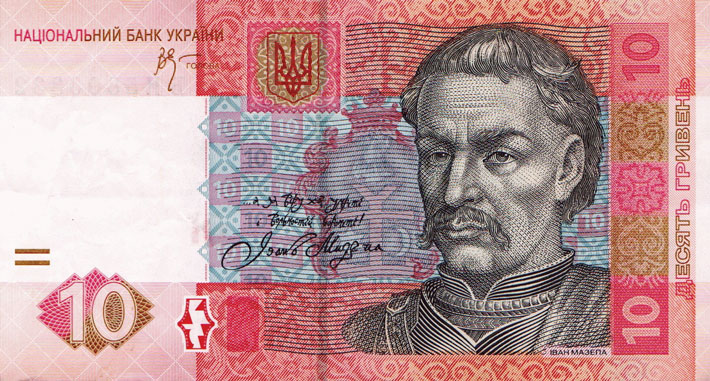
In 1569, Poland and the Grand Duchy of Lithuania, which included Ukraine, united to form the Polish-Lithuanian Commonwealth. Chafing at this new entity’s efforts to control them, many Ukrainians took refuge on the frontiers to the south and east known as the Wild Fields. There, they were able to pursue a life of independence and adventure and came to be called Cossacks, derived from a Turkic term meaning “free men.” The Cossacks established successful farms, which they had to defend against persistent threats from the Ottoman Turks and their allies the Crimean Tatars to the south. Over time, the Cossacks became the political elite of Ukraine and, along with members of the Orthodox clergy, started to demand the right to rule themselves. After a series of failed uprisings, in 1648 the Cossacks achieved their goal. Led by their hetman, Bohdan Khmelnytsky, they threw off the yoke of Polish rule, attaining a measure of independence and establishing a state known as a hetmanate.
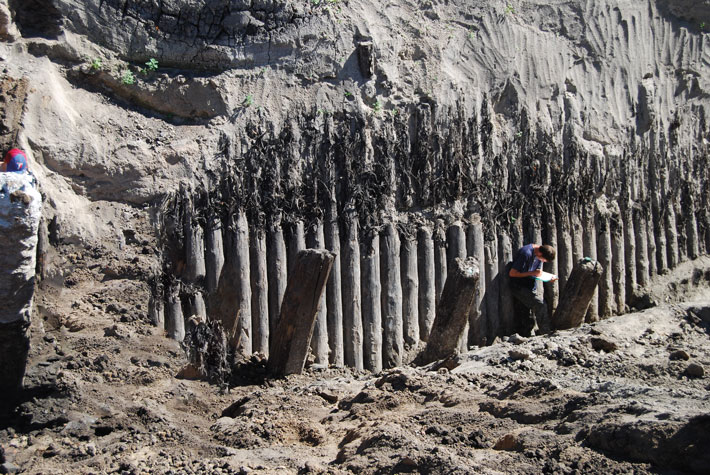
It didn’t last long. By 1654, the Cossacks were forced to become vassals of Muscovy, as Russia was then known, and their autonomy was significantly curtailed. Over the next few decades, they were alternately subjected to Russian and Polish domination, interspersed with outbreaks of bloody internecine strife. A series of hetmans were forced to make impossible compromises between their people’s desire for freedom and Polish and Russian rulers’ demands for control. In 1667, their more powerful neighbors split their territory in two: Right Bank Ukraine, to the west of the Dnipro River, would be ruled by the Poles, and Left Bank Ukraine, to the river’s east, would be ruled by Muscovy.
The Cossacks’ fortunes shifted with the rise of Mazepa to the position of hetman of Left Bank Ukraine in 1687 after his predecessor was exiled to Siberia, having been scapegoated for a failed military campaign against the Tatars. Mazepa ingratiated himself with Peter (reigned 1682–1725), supporting the 17-year-old czar in 1689 when he seized power from his older half-sister Sophia, who had been ruling as regent. The hetman was 50 years old at the time and shared his wide experience and education with the young czar. “He was like a father to Peter in a sense,” says Tairova-Yakovleva. Born into a noble Cossack family, Mazepa spent several years as a page in the court of the Polish king, attended university in Poland, Germany, France, and Italy, and studied artillery in Holland.

As hetman, he put his military training to good use, crafting a successful strategy in campaigns against the Tatars that led to peace with them and the Ottomans. This relieved both Ukraine and Muscovy of the strain of defending against incessant Tatar raids. As a reward for this accomplishment, Peter made Mazepa a knight of the Order of St. Andrew, Muscovy’s highest chivalric honor. Amid the burned remnants of the home of Pylyp Orlyk, Mazepa’s general secretary and chancellor, in a suburb to the north of the Baturyn fortress, archaeologists found fragments of a ceramic stove tile bearing the last known version of Mazepa’s coat of arms. Among its many features is the Order of St. Andrew, as well as a crown at the top identifying Mazepa as a prince of the Holy Roman Empire, an honor he was granted in September 1707 by the emperor Joseph I (reigned 1705–1711), also in recognition of his help in subduing the Ottomans and Tatars. “As Mazepa’s secretary, Orlyk probably knew right away when he was granted this status, and wanted to glorify him as a prince, so he commissioned this coat of arms with the princely crown on top,” says archaeologist Volodymyr Mezentsev of the Toronto office of CIUS, who is executive director of the Baturyn archaeological project and was coleader of the excavations from 2001 through 2013.
Peter’s support allowed Mazepa to rule the hetmanate as he wished, and the unaccustomed absence of strife freed him to focus on cultural development. “Peter signed a new agreement that allowed the hetmanate to be completely autonomous, and Mazepa was able to control all the taxes and income he collected,” says Tairova-Yakovleva. “This gave him the opportunity to spend as he wanted, to support literature, painting, and education.” The Kyiv-Mohyla Academy, where Mazepa had begun his own schooling, became the favored educational institution for both the Ukrainian and Russian elite. The majority of the religious figures who drove Peter’s efforts to reform the Russian Orthodox Church by bringing it under increased state control came from the hetmanate. “In many regards, Mazepa supported Peter’s ideas and played an important role in the early stages of establishing the Russian Empire,” says Tairova-Yakovleva. “He believed the changes in the Muscovy state would be helpful to Ukraine because society would become more modern, more European, and more educated.” Mazepa himself restored and built many churches, including the Baroque brick Cathedral of the Holy Trinity in the Baturyn fortress, which was completed around 1692 and is believed to have featured five domes. When archaeologists excavated the cathedral’s foundations, they found that it measured 127 by 80 feet, making it one of the Cossack state’s largest churches.

Archaeologists have also spent years unearthing the remains of Mazepa’s personal residence in Honcharivka, which the hetman completed by 1700. These excavations have produced extensive evidence of Mazepa’s efforts to import Western European styles, to which he was exposed during his university days. The fortified villa covered 22 acres and had defenses modeled on contemporaneous Dutch strongholds. In addition to its three-story Baroque masonry palace, it included a fruit garden and birch grove, laid out in a network of straight lines resembling a French park. The design of the palace was striking, with ceramic column bases, brick semicolumns, and carved limestone Corinthian capitals, all painted bright red. The columns flanked the structure’s front entrance and contrasted with its whitewashed walls. Adorning the friezes at the top of each story were dozens of glazed ceramic rosettes, disks with multicolored patterns that resemble stylized flowers. During their excavations, archaeologists found pieces of the columns with remnants of their red ocher paint, as well as many rosette fragments coated with white, yellow, turquoise, and blue enamel. In addition to its design, the palace stood out for its height, given that Cossack houses tended to be one story. “Some archaeologists have doubted it was three stories because that was atypical for Ukrainian residences of the time,” says Mezentsev. “But why should Mazepa follow local tradition? He was a very Western-oriented man.”
Amid the burned remnants of the palace, archaeologists have found numerous fragments of glazed ceramic and terracotta tiles decorated with floral motifs, coats of arms, and angels or cherubs, which once lined the structure’s stoves. The palace’s floors were paved with glazed green, blue, and yellow ceramic tiles of various shapes. According to Mezentsev, these tiles were likely fashioned by top ceramicists from Kyiv, whom Mazepa brought to his capital. Other finds at the palace, including fragments of engraved Bohemian glassware, speak to the salon-like atmosphere the hetman is known to have fostered there. A French diplomat named Jean de Baluze, who attended a lavish reception at the palace in 1704, reported that Mazepa conversed with several Italian artisans and German physicians in their native languages, while sprinkling his conversation with Latin quotations. “Mazepa established a court that was really remarkable in reflecting the Baroque era of literature and art,” says Zenon Kohut, former director of CIUS at the University of Alberta, who founded the Baturyn archaeological project and oversaw it for its first 14 years. “He was considered one of the most cultured people of the time throughout the entire Russian sphere.”

Baluze also noted that the palace housed an impressive collection of rare weapons and a reception hall lined with portraits of contemporaneous rulers, such as King Louis XIV of France (reigned 1643–1715), a Habsburg emperor, a Polish king, and a Turkish sultan. According to Mazepa’s right-hand man, Orlyk, the palace housed one of the most extensive libraries of its time, stocked with numerous books, including centuries-old German and Latin volumes and illuminated manuscripts. Save for what Russian troops spirited back to Muscovy, all of this went up in flames. One memento of Mazepa’s great library that was found by archaeologists was an engraved bronze plate depicting a nude man playing a trumpet. “It resembles an angel without wings,” says Mezentsev. “This plate may have come from the casing of a religious book made in Italy during the Renaissance or Baroque era.”
Throughout 1708, the conversations at Mazepa’s palace in Honcharivka grew increasingly dark and urgent. Eight years earlier, in 1700, Peter, set on challenging the supremacy of the Swedish Empire, had initiated the Great Northern War. Despite some misgivings regarding his military adventurism, Mazepa supported the czar, providing troops and resources. In 1704, Peter sent Mazepa to get control of the Right Bank Cossacks and then allowed the hetman to incorporate them into his hetmanate, uniting Right Bank and Left Bank Ukraine for the first time in decades. By 1707, however, Charles XII of Sweden (reigned 1697–1718) had vanquished Peter’s major allies—Denmark, Saxony, and the Polish-Lithuanian Commonwealth—and was advancing toward Muscovy. The Swedes, short on food and gunpowder, detoured toward grain-rich Ukraine to replenish their supplies. Peter refused to defend the hetmanate and ordered Mazepa to burn the territory in the Swedes’ path. Unwilling to sacrifice the towns, villages, and churches he’d labored to build up, and displeased by Peter’s cavalier treatment of the hetmanate’s military resources and increasingly meddlesome approach to its affairs, Mazepa formed an alliance with Charles. This led to Peter’s vengeful targeting of Baturyn. “The czar had relied on Mazepa for advice on his foreign policy, on his diplomacy,” says Kohut. “That’s why Peter was so enraged when Mazepa changed sides. There was a personal aspect to it.”
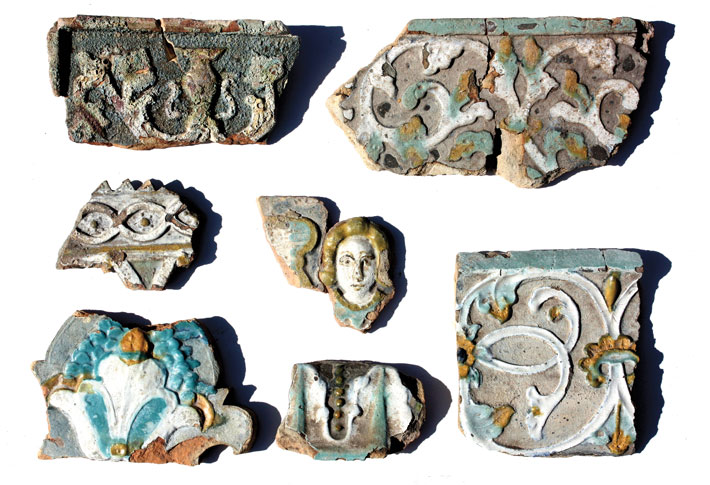
Exactly how the Russian forces overwhelmed the defenses of the Baturyn fortress and citadel has been a matter of debate. One theory holds that a Cossack traitor led the invaders through an underground passageway. Archaeologists unearthed just such a tunnel, leading nearly 150 feet from the banks of the Seim River to the basement of the wooden Church of the Resurrection, which stood on the citadel. Little remained of the church itself, as it was burned after the attack, but researchers were able to identify its location based on their discovery of its large cemetery. Mezentsev believes the Russians also used artillery to blow a hole in the fortress wall and then stormed through it. He points out that the fortress was originally built by the Poles in the early to mid-seventeenth century, when they controlled the area. It was later restored and modified by several hetmans, including Mazepa, but didn’t provide a formidable defense in 1708. “For the mid-seventeenth century, the fortress was probably okay,” says Mezentsev, “but it was obsolete by the end of the century, when siege artillery had become more powerful.” During excavations of the log-lined moat surrounding the citadel, archaeologists found that it was clogged with silt and hadn’t been cleaned regularly.
Within the fortress, archaeologists uncovered three large granaries with 32 grain pits, evidence of the copious provisions that Mazepa had hoped to share with the Swedes—and that Peter successfully deprived them of. They also discovered extensive evidence of the destruction wrought by the Russians. There were numerous cannonballs, musket balls, and arrowheads. Bricks and glass dishes had been melted by the fire. In the cemetery of the Church of the Resurrection, a lower layer of peacetime burials consisted mainly of elderly people interred in coffins at least three or four feet underground. Above them was a layer of shallow burials, mostly children or teenagers, with no trace of coffins. In the earthen fill of these burials, archaeologists found rubble from a nearby building that was destroyed in 1708. “They were buried in November after Baturyn was taken, and it was early winter, so the ground was frozen,” says Mezentsev. “They couldn’t dig deep pits for the graves.” In the ruins of the Cathedral of the Holy Trinity, archaeologists uncovered more than 400 burials, a significant portion containing victims of the massacre. “There are many skeletons with trauma from military action,” says Mezentsev. “There are skulls with bullet holes, severed hands and legs, and bones burned by the fire.” Archaeologists believe that every cemetery in Baturyn and its suburbs dating to the late seventeenth and early eighteenth century includes burials of civilian victims of the 1708 massacre. The graves of the soldiers who died defending the capital have yet to be located.

In the months after Baturyn was destroyed, Mazepa and Peter competed for the support of the Cossacks, with Mazepa accusing Peter of encroaching on Cossack autonomy and the czar tarring the hetman as a traitor. Peter had the Orthodox Church expel Mazepa by declaring an anathema against him. The czar installed a new hetman and succeeded in winning over the majority of the Cossacks, likely due to their horror at the destruction of Baturyn and revulsion at Mazepa’s rejection by the Church. When the armies of Charles and Peter faced off on July 8, 1709, near the city of Poltava, 175 miles southeast of Baturyn, Mazepa and around 5,000 Cossacks fought on the Swedish side, while more than three times as many took the side of Muscovy. The Swedes were so short on gunpowder that they could only use four of their 34 cannons and were soundly defeated. Charles and Mazepa fled to Ottoman Moldavia, southwest of Ukraine, where the hetman died several months later at the age of 70.
Mazepa’s gambit clearly failed, but according to Tairova-Yakovleva, he was in a no-win situation given Peter’s imperial ambitions. “If Mazepa hadn’t gone to the Swedish side, then we can foresee what would have happened,” she says. “Ukraine would have been destroyed by Peter and would have lost its autonomy. Mazepa had no great choice in terms of what to do, but at least he was brave enough to try.” In the aftermath of the Battle of Poltava, the hetmanate lost much of its independence. It then gained some of it back, but was eventually abolished and absorbed into the Russian Empire in 1764 under the empress Catherine the Great (reigned 1762–1796). The territory that Mazepa had built into a bastion of Cossack sovereignty was now known as the Little Russia Governorate.


